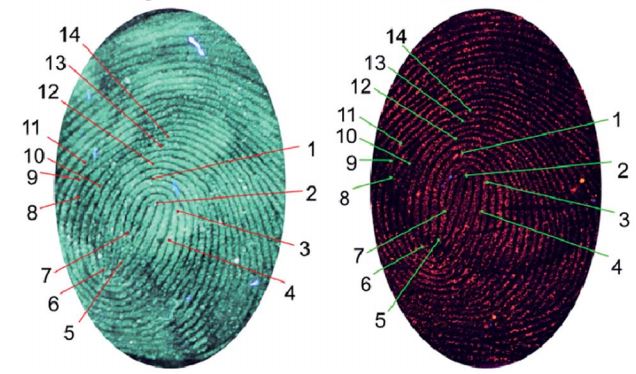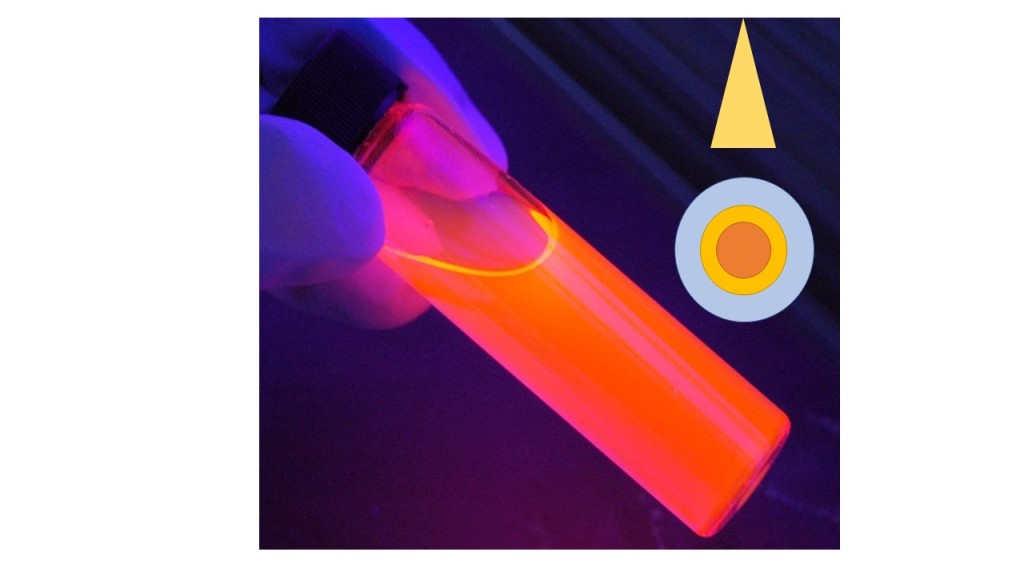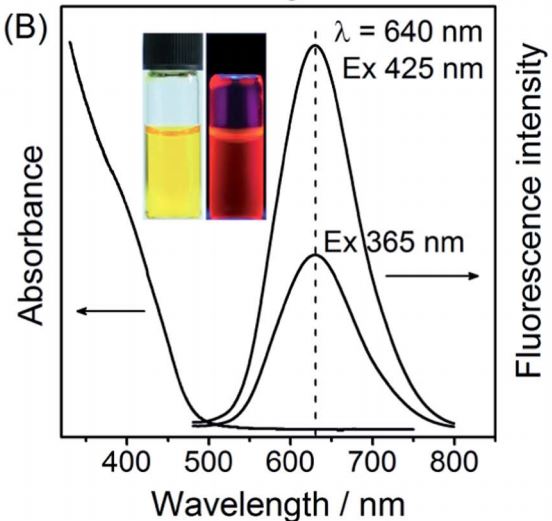Quantum dots shine new light on latent fingermarks
-Edmond Locard
This quote is one of the most famous principles in the forensic community coined by Dr. Edmond Locard. This principle of exchange is primarily applied to trace analysts and search for evidence at crime scenes. Trace or fragmentary evidence refers to any material left or taken from a crime scene, or the result of the contact between two surfaces such as shoes on floors or soils. Two famous cases illustrating this principle is the Weimar children murders and the Westerfield-van Dam case. One of the most prominent examples of trace evidence is latent fingerprints or fingermarks.

A latent fingermark is a mark left on a surface by deposits of oils or perspiration from a finger. Current latent fingermark analysts implement various techniques to visualize and compare the ridges, bifuurcations or forking ridge, dots and other features within an unknown print to a suspect’s reference print. Some of the techs used to make the prints more visible include alternate light sources, superglue fuming and chemical developers that alter the color of the prints such as ninhydrin, which turns invisible prints bright purple. But what if you could make prints glow by spraying with a substance called quantum dots?
The word quantum may raise some red flags due to the complexity behind the meaning of the word. The meaning of quantum in the “physical” and “chemical” realms refers to minimum amount of energy required for a change or the minimum value of any physical property in an interaction. Quantum dots (QD) are small semiconductors that are used to emit energies as colors. These dots are applied in a variety of fields such as entertainment (phones and QLED televisions), environmental (water sampling), and the biomedical (bio-imaging) fields.
This can be seen in Figure 2 where the use of filters and energy alters the results visually in a drastic way. Increasing the concentration of the metals can also increase the glowing, visual response. The researchers for this study used this technology to enhance the complex features of latent or invisible fingermarks. They tested multiple surfaces including glass, an aluminum drink cans, and $5 Australian polymer banknotes. The researchers collected the fingermarks samples from a combination of men and woman ranging from the ages 20-50. Once collected, they immersed the samples in the quantum dots and rinsed to remove any extra material.

The results showed an increased visual response for all three evidence types tested up to eight days after the initial mark was made. The QDs with the filters allowed for easy visualization of the intricate details of the ridges and other fingermark features. The authors were additionally mindful of the heavy metals that typically impact the environment and added biofriendly molecules to the outside of the QDs to improve its biodegradability without decreasing its glowing response.
The method had difficulties, however, with the natural fingerprint patterns were harder to develop immediately after they were placed on the surfaces. The samples collected via tape showed high resolution of the fingermarks even after eight days from initial contact. This illustrates the versatility and effectiveness of the method by demonstrating achievable results with representative samples found at crime scenes.

Looking forward, once the technique is tweaked a bit, the authors could evaluate a wider range of donors (considering other ethnic backgrounds and age ranges) and other surfaces to achieve an optimal result. Some factors such as additional surface modification of the QDs to improve its biodegradability, the stability/shelf-life of the QDs, and its possible combinations with other methods (such as superglue fuming) are good avenues to pursue.
| Title | Luminescence detection of latent fingermarks on non-porous surfaces with heavy-metal-free quantum dots | |
| Authors | Sorour Shahbazia, Rhiannon Boseleya, Braden Granta, Dechao Chena, Thomas Beckera, Oluwasesan Adegokeb, Niamh Nic Daéidb, Guohua Jiaa, Simon W. Lewisa | |
| Journal | Forensic Chemistry | |
| Publisher | Elsevier | |
| Year | 2020 | |
| Link | https://www.sciencedirect.com/science/article/pii/S2468170920300102 |



Very interesting article.
LikeLike
Yeah Mr. Feeney, yeah science!
LikeLike
Quantum dots are artificial clusters of semiconductive atoms that have the ability to confine the motion of the electrons due to their small size.
LikeLike